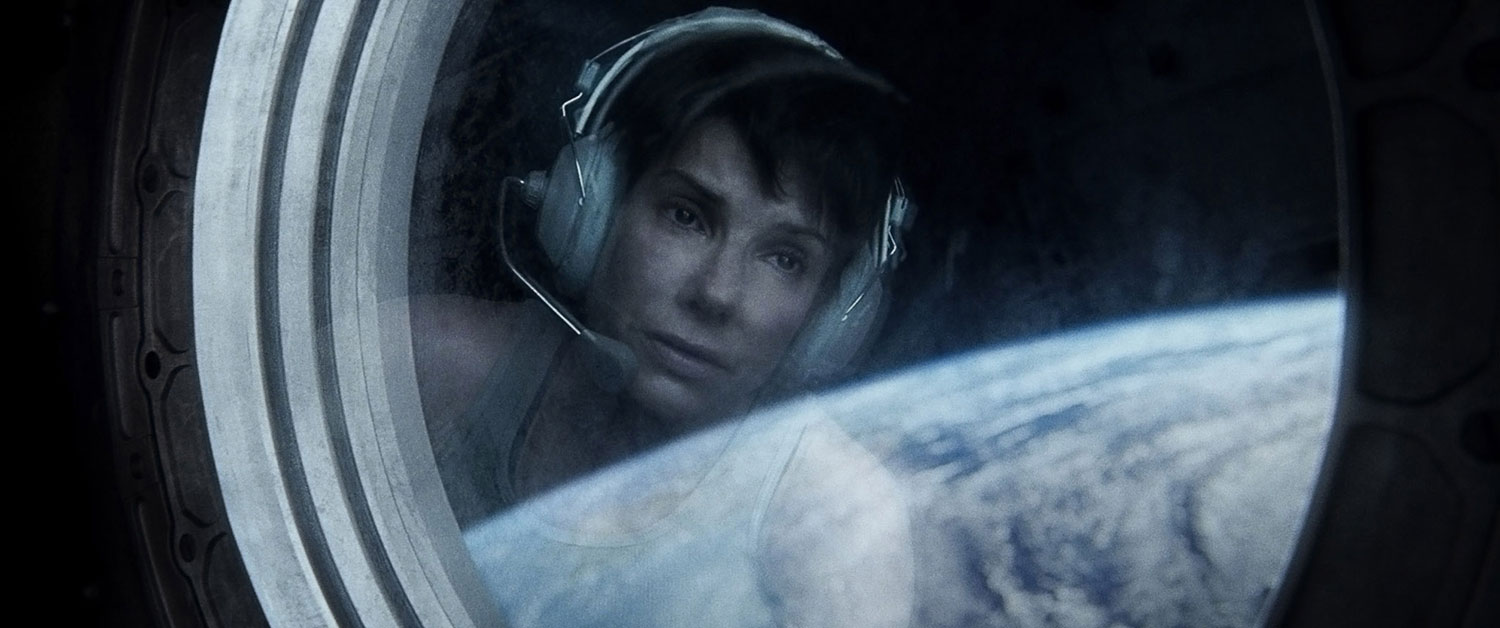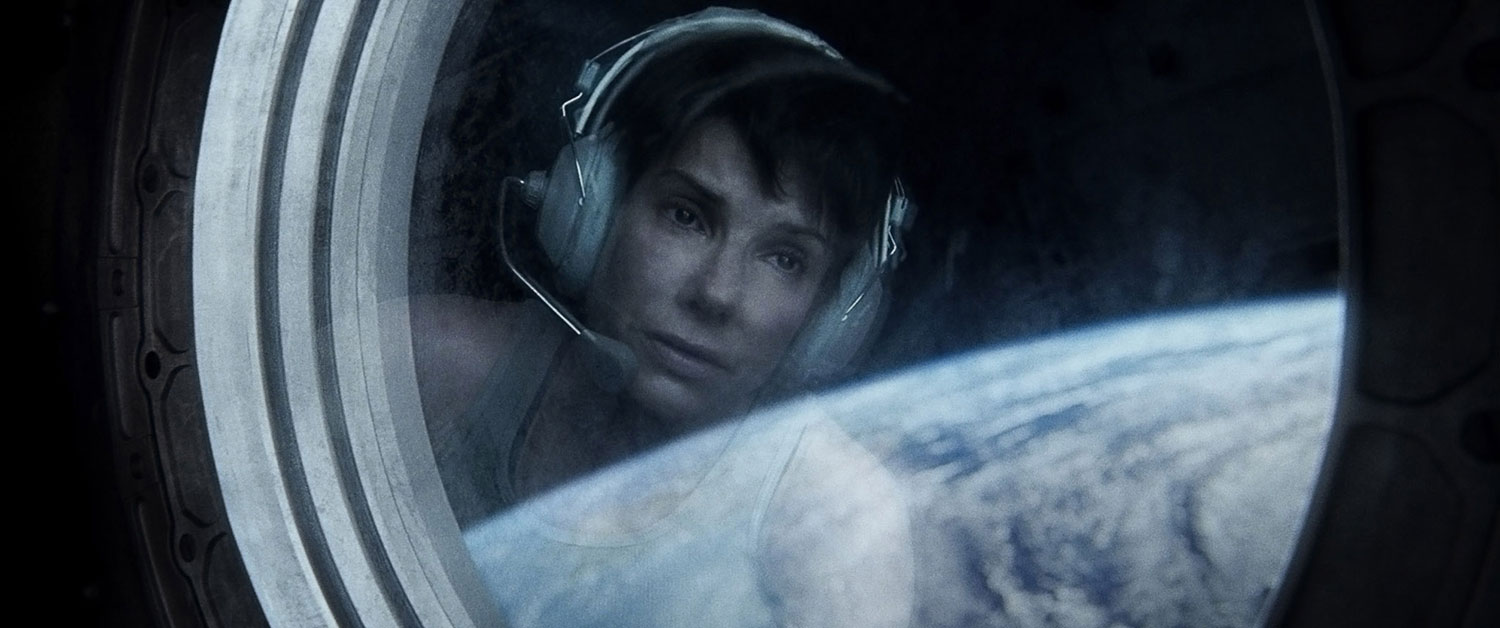
Updated Mar.3, 2014
Emmanuel “Chivo” Lubezki is one of Hollywood’s most innovative and celebrated cinematographers. He has worked with the likes of Tim Burton, Terrence Malick and Alfonso Cuarón, and was awarded his first Oscar this weekend for the cinematography on Gravity.
The origins of Gravity began several years ago. The goal was to visualize a film set almost entirely in zero gravity, while employing a seamless combination of advanced CGI and traditional moviemaking techniques.
But all the technical innovations in the world couldn’t give it a life and a soul, and that’s where the combination of director Alfonso Cuarón, cinematographer Lubezki and visual-effects supervisor Tim Webber brought their own personal perspectives to the riveting story.
Recently Emmanuel Lubezki took a break from working on his current project to discuss the visuals of Gravity and how they breathed life into something that could have felt so alien. We also discussed his favorite scenes — including the challenging 12-minute opening sequence.
The following is condensed from a longer interview with LightBox.
LightBox: How have you honed your vision as a cinematographer? Did you ever take still photographs?
Emmanuel Lubezki: I wanted to be a still photographer, but there was no proper photography school in Mexico when I was younger. A friend of mine was the son of Graciela Iturbide, one of the great photographers of Mexico. She was very kind and invited me on one of her trips to a little town in the mountains of Mexico.
She told me to bring my camera and we would take photos together. I was about fifteen or so and from the moment we arrived in this town I saw how quickly people opened up to her. She became completely invisible, could do whatever she wanted and had control, in a way, and I couldn’t do it.
I had a panic moment because I didn’t want to be a fashion photographer or a war photographer. I wanted to do what she was doing.
She said, “Why don’t you go to film school? You will learn the basic craft of photography and then you can do whatever you want.” And after one week of film school I had forgotten about still photography and was on my way to becoming a cinematographer.
LB: When approaching a film like Gravity how do you begin the process of researching what that’s going to look like?
EL: I never want to base my work on other films. I use them as reference for what I don’t want. But what I did was a very intense search of images from NASA and the Russian Space agency.
We put together a large collection of photographs and picked what was best for the movie. The only thing we couldn’t get was how the stars looked during the daytime. At first we based that on descriptions from astronauts and then we had to take license. Without the stars it’s just blackness and feels two-dimensional, and we wanted it to feel as deep as possible. We had to kind of cheat, sometimes, to give that impression of depth.
LB: Can you take us through your favorite scenes from the film?
EL: The first scene is incredibly challenging because the light is constantly changing from one frame to the other — the earth is moving, the ISS is moving, the sun is changing position — and that was incredibly exciting. It took many months to design it and years to shoot it.
LB: Is there a particular moment in that shot that you’re particularly proud of?
EL: Something that is very exciting for me to see is Sandra Bullock spinning out of control. We designed all this equipment that allows us to spin the environment around her and give the impression that she is spinning. You can see that in the reflections in her eyes and the visor as the shot is going from an objective shot, where you see her spinning, and then suddenly it becomes this subjective shot, and you start to see what she’s looking at while spinning out of control. I think it’s beautiful!
In fact, Sandra appeared to be moving way faster than in the final cut of the film, but as it became more three-dimensional it became unwatchable. I was getting nauseous and we had to slow it down.
LB: What’s another challenging scene?
EL: When you see Sandra floating inside the ISS for the first time. When she looks fetal was one of the toughest shots because she’s going from wearing a CGI suit to being almost naked.
The idea is that she was inside the womb. It’s funny, but Alfonso and I have been working together for so long we don’t have to chat too much. If he draws something like that, I just know.
LB: Were you thinking about the great science photographs of fetuses?
EL: Yes, I have in my mind all the photos thanks to LIFE. I’ve seen all those photos of fetuses backlit and you can feel the surface scattering — you know — the light as it goes through the skin and scatters inside?
The first version of that “in the womb” scene did not to have the window behind her. In the real module there is no window and Alfonzo wanted to keep it as close as possible to reality. But I went to Tim Weber and said I needed a window there — I wanted to see the transparency in the skin. I had an incredible collaboration with Tim. He began to feel that the window translated the idea better. Once Alfonso saw the version that was closer to the final he said, “Oh, let’s go for that.”
Without Sandra it would be impossible to make that scene work. She’s really seated on a bicycle seat and the camera and the lights and the environment are moving around her. But she can’t show tension because that doesn’t happen in zero gravity. She’s like a great ballerina — she taught her body to move as if she was in zero gravity and act at the same time.
LB: What advice would you give to a photographer moving from stills to film?
EL: Right now you can make a movie with your iPhone. I would say just do it! Don’t wait for a studio to call you. Get together with your friends and make a movie, make a short film, just go and jump.
LB: Can you talk about the last scene when she gets out of the water?
EL: Almost the whole movie was shot digitally. We use the ARRI Alexa camera. A lot of the film was created pixel by pixel. But when she comes out of the water at the end I wanted her to see the earth with different eyes after she goes through her rebirth. So we decided to shoot that in 65-millimeter film. It’s a massive negative that allows you to capture a lot of detail that digital can’t. It was kind of dangerous because we didn’t want you to feel like you were in a different movie. We wanted a feeling of enhanced mindfulness.
Going back to medium formant photographs, they always give you that impression. When you see a large format negative of a picture of a tree you feel that the tree has a spirit. That feeling is what I wanted to capture.
Update: Post updated to reflect Emmanuel Lubezki’s Oscar win for Best Cinematographer.
Paul Moakley is the Deputy Photo Editor at TIME. His last interview for this series on great cinematographers was with Sean Bobbitt on 12 Years a Slave.

More Must-Reads From TIME
- The 100 Most Influential People of 2024
- Coco Gauff Is Playing for Herself Now
- Scenes From Pro-Palestinian Encampments Across U.S. Universities
- 6 Compliments That Land Every Time
- If You're Dating Right Now , You're Brave: Column
- The AI That Could Heal a Divided Internet
- Fallout Is a Brilliant Model for the Future of Video Game Adaptations
- Want Weekly Recs on What to Watch, Read, and More? Sign Up for Worth Your Time
Contact us at letters@time.com